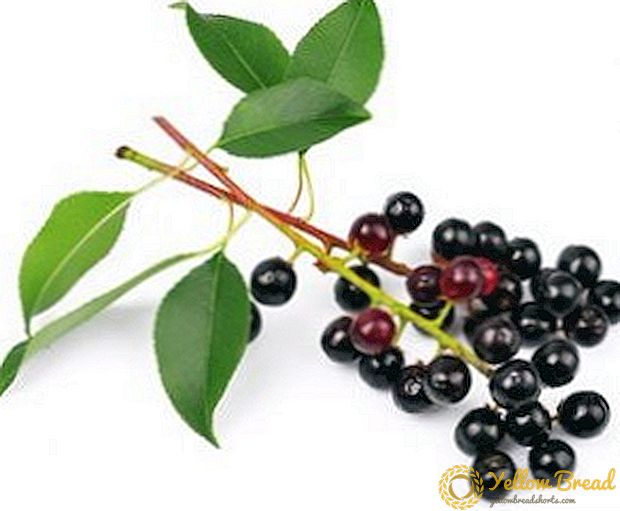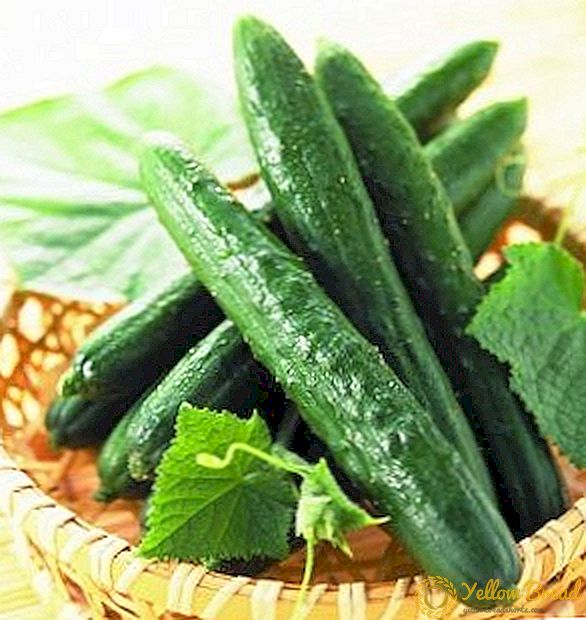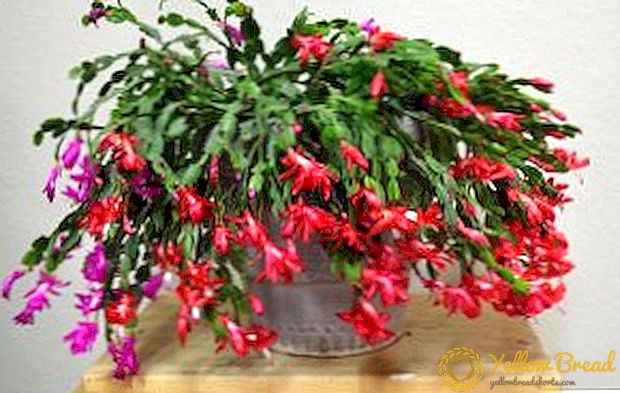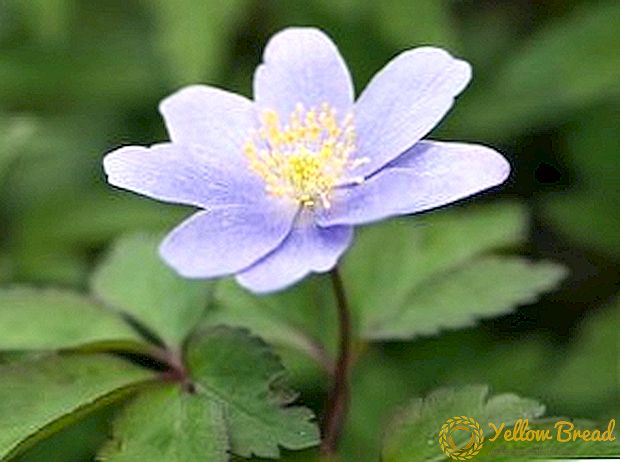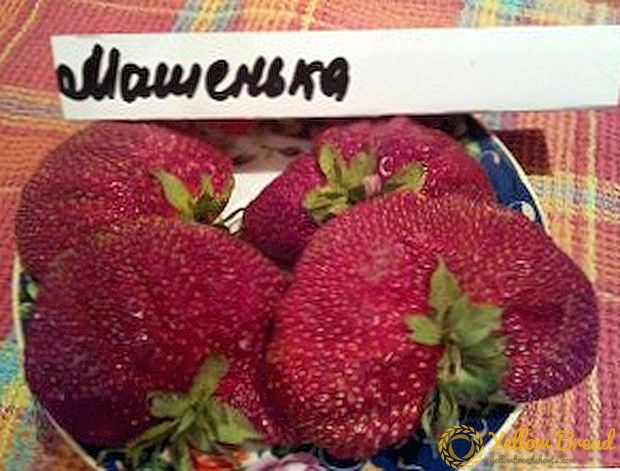 Strawberries are probably one of the most popular and favorite berries of gardeners. Many people would like to get a variety with the highest characteristics at their site: large berries, high resistance to diseases, unpretentious care and good yields. On one of these varieties we will talk in this article.
Strawberries are probably one of the most popular and favorite berries of gardeners. Many people would like to get a variety with the highest characteristics at their site: large berries, high resistance to diseases, unpretentious care and good yields. On one of these varieties we will talk in this article.
- Description and characteristics of strawberry "Masha"
- Pros and cons varieties
- Choosing healthy strawberry seedlings when buying
- Choosing a place for strawberries
- Preparatory procedures before landing
- Planting strawberry seedlings
- Competent care - the key to a good harvest
- Watering, weeding and loosening the soil
- Feeding strawberries
- Soil mulching
- Treatment and protection from diseases and pests
- Pruning strawberry whiskers
- Harvesting strawberries
Description and characteristics of strawberry "Masha"
Strawberry "Masha" grows a compact bush up to 45 cm tall. It has large, juicy-green leaves on thick petioles. Since they grow up with growth, the bush is not too wide in diameter. The fruits of “Masha” are very large: the first crop brings berries weighing up to 130 g, the next one is about 100-110 g. In addition, these berries have a rather interesting shape, resembling a fan in the fold, although the shape of the second crop will be more regular and smoothed.The first strawberry berries “Masha”, as stated in the description of the variety, may be accrete, but this happens rarely. When ripe, they are dark red in color, without cavities, fleshy, juicy with a dessert taste. The tip of the strawberry is greenish-white (the variety matures from the base). The whole berry is covered with white and yellow seeds, slightly sunk into the flesh. 
Pros and cons varieties
Unfortunately, there is nothing ideal in this world, and the strawberry “Masha”, apart from its merits, has its drawbacks. First of all, the disadvantages include strong sensitivity to sun exposure (leaves are covered with burn spots), and, oddly enough, the disadvantage is the large size of the fruit, because the bigger the berry, the smaller its quantity.
Among the absolute advantages of the variety are the winter hardiness of the strawberry “Masha”, good yield, sweet, juicy, fleshy berries and high immunity to disease. In addition, "Masha" tolerates transportation. Also, the advantages include easy reproduction and a good indicator of rooting of a mustache.
Choosing healthy strawberry seedlings when buying
 A healthy strawberry seedling leaves are monochromatic, juicy-green with a glossy surface on the upper side of the plate. The leaf to the touch is fleecy and fleshy, the scape is thick and strong.The horn must be at least 7 mm thick, as the strawberry fruiting depends on it. In seedlings located in the pot, the root system occupies the entire space of the container, while in plants with open roots their length must be at least seven centimeters.
A healthy strawberry seedling leaves are monochromatic, juicy-green with a glossy surface on the upper side of the plate. The leaf to the touch is fleecy and fleshy, the scape is thick and strong.The horn must be at least 7 mm thick, as the strawberry fruiting depends on it. In seedlings located in the pot, the root system occupies the entire space of the container, while in plants with open roots their length must be at least seven centimeters.
It is best to purchase varietal seedlings in nurseries, since buying from hands will not give you the guarantee of buying exactly the sort you wanted.
Choosing a place for strawberries
"Masha" is planted on a flat plot, although a small option is considered a valid option. The best place will be the territory on the southwest side of the site. Oblique slopes and lowlands in which moisture can stagnate strawberries are contraindicated. You should also not have a landing in the south, as "Masha" is very sensitive to the sun, moreover, in the southern parts of the snow melts faster, exposing vulnerable shrubs for frosts. Before planting strawberries, make sure that the ground water in the selected area lies rather deep, at least 80 cm from the surface. Strawberries like light and loose soils, but loam and sandy loam are best suited.
Preparatory procedures before landing
Two weeks before planting, they prepare the soil: they dig up, removing weed grass and depositing 10 kg of humus and 5 kg of sand per 1 m² into it. To protect the plant from insect invasion, before planting, the soil is also treated with insecticides.
Planting strawberry seedlings
 Landing is carried out in late May or early August, and it is better to choose an overcast day for it. For plants, dig pits with a depth of 20 cm, placing them at a distance of 40 cm from each other. Pour half a liter of water into each well, place the seedling, so that the core remains on the surface, and sprinkle it with soil. After this, re-watered and laid mulch (sawdust).
Landing is carried out in late May or early August, and it is better to choose an overcast day for it. For plants, dig pits with a depth of 20 cm, placing them at a distance of 40 cm from each other. Pour half a liter of water into each well, place the seedling, so that the core remains on the surface, and sprinkle it with soil. After this, re-watered and laid mulch (sawdust).
Competent care - the key to a good harvest
Caring for strawberries "Masha" is not difficult: watering, feeding, loosening, weeding and mulching are all that the plant needs.
Watering, weeding and loosening the soil
 Watering strawberries carried out in the morning, using water at room temperature. Per 1 m² poured up to 12 liters of water. Over the summer, depending on precipitation, there should be from twelve to fifteen irrigations. It is also important to water the plant after the fruit ripens, because during this period buds are formed for the next year. After watering, it is necessary to loosen the soil and clean it from weeds, and if the roots are bare at the strawberry, they should be spud. In hot weather and the scorching sun strawberries need to pritenyat to protect from burns.
Watering strawberries carried out in the morning, using water at room temperature. Per 1 m² poured up to 12 liters of water. Over the summer, depending on precipitation, there should be from twelve to fifteen irrigations. It is also important to water the plant after the fruit ripens, because during this period buds are formed for the next year. After watering, it is necessary to loosen the soil and clean it from weeds, and if the roots are bare at the strawberry, they should be spud. In hot weather and the scorching sun strawberries need to pritenyat to protect from burns.
Feeding strawberries
Top dressing is especially necessary for the plant during the period of active growth, otherwise the strawberry "Masha" by the time of ripening will not be pleased with an abundance of berries. During the appearance of the first strong leaves of strawberries fertilized with a solution of nitroammofoski, at the rate of 1 tbsp. spoon to 10 liters of water. After the fruit is formed, it is fed (under a bush) with a mixture of ammonium nitrate and potassium sulfate, taken in equal parts (1 teaspoon each). After ripening berries make 2 tbsp.spoons of potassium nitrate, diluted in 10 liters of water or 100 g of ash (on the same 10 liters of water). With the arrival of autumn, in September, strawberries are fertilized with the preparation "Kemira Autumn", 50 g of which is enough for 1 m² of plantations (the soil is cultivated between the rows).
Soil mulching
After planting young plants and watering adult bushes, it is necessary to mulch the soil with sawdust, which will help to preserve moisture and protect the root system from overheating. During the period of fruit bearing, the soil under the bushes is covered with dry moss, since large berries fall on the ground under the weight of their own weight and can be affected by rot.
Treatment and protection from diseases and pests
 Strawberry "Masha" has a good resistance to diseases, but sometimes if you do not follow the rules of care, it can suffer from powdery mildew and be affected by pests. To avoid this, you need to take some security measures. First of all, observe crop rotation. The best predecessors for strawberries are carrots, garlic, parsley, radishes, peas, oats, lupins and rye.
Strawberry "Masha" has a good resistance to diseases, but sometimes if you do not follow the rules of care, it can suffer from powdery mildew and be affected by pests. To avoid this, you need to take some security measures. First of all, observe crop rotation. The best predecessors for strawberries are carrots, garlic, parsley, radishes, peas, oats, lupins and rye.
- Cleaning the area from leaves and weeds, during growth and after harvesting.
- Controlled watering, as excess moisture damages strawberries.
- Before the flowering period and after harvesting, carry out preventive spraying with a mixture of water (15 l) and Topaz (15 g), with the addition of 30 g of soap and copper sulfate.
- Preventive treatment against pests: after harvesting, spray carbofos (three tablespoons of the preparation for 10 liters of warm water).
Pruning strawberry whiskers
 Strawberries quickly and in large quantities builds up a mustache that draws useful substances from the soil. In order to increase the yield of strawberries “Masha”, the size of the fruits and to avoid diseases due to thickening of the bushes, they regularly cut their whiskers.
Strawberries quickly and in large quantities builds up a mustache that draws useful substances from the soil. In order to increase the yield of strawberries “Masha”, the size of the fruits and to avoid diseases due to thickening of the bushes, they regularly cut their whiskers.
Harvesting strawberries
Variety "Masha" is considered to be medium, which means that strawberries ripen in early June. Ripening is usually uniform, so the harvest is not delayed. It is carried out in the daytime and in dry weather, since wet strawberries will not be stored. Berries begin to collect, after waiting three days after their complete redness.If transportation is planned, it is better to perform it early. Fruits are collected immediately in the container in which they will be stored. Storing strawberries for a short time, just a few days in the fridge, so it needs to be immediately processed.
Harvested for the winter in the form of jam, canned in syrup, dried and dried strawberries, in any form is very tasty and healthy. You can also freeze, but the berry absorbs water and smells too much, so it is better to choose another option blanks.

